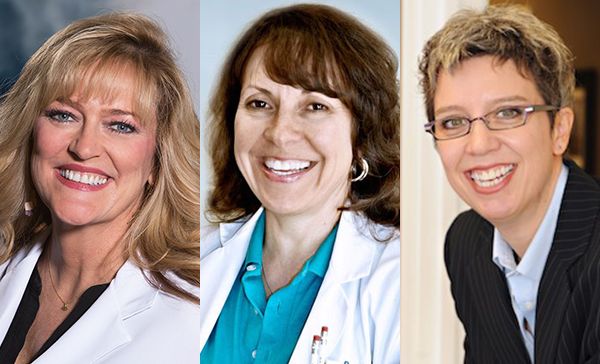

Special contribution Amy Hellem
Knowing that AMD is the leading cause of preventable adult vision loss in the U.S., Pamela Lowe, OD, FAAO, of Chicago, Illinois, set out to create an age-related macular degeneration (AMD) Center of Excellence dedicated to the proactive diagnosis and treatment of the disease. Looking back, she says it’s been one of the greatest accomplishments of her professional career. And she’s not alone.
More and more often, optometrists are recognizing the important role they play in AMD and are embracing the opportunity to improve patients’ lives as well as their practices’ bottom lines. Laurie Sorrenson, OD, FAAO, of Austin, Texas, started making big changes about two years ago, and Amanda Lee, OD, of Myrtle Beach, South Carolina, is only a few months into transforming AMD protocols in her practice.
“Many of our older patients complain of having trouble seeing or driving at night, and we often attribute this to cataracts or just part of the normal aging process,” says Dr. Lowe. However, these symptoms can be a sign of something much bigger. As she and her colleagues are discovering, an alarming number of patients with seemingly routine complaints have undiagnosed AMD. “Multiple studies have shown that dark adaptation function is dramatically impaired from the earliest stages of AMD, with increasing impairment as the disease progresses, ” she says.
Numbers don’t lie
AMD is more prevalent than diabetic retinopathy and glaucoma combined, yet too many cases of AMD are overlooked based on the absence of structural findings. In fact, a recent study published in JAMA Ophthalmology revealed that both optometrists and ophthalmologists are missing AMD about 25 percent of the time, and nearly one-third of undiagnosed eyes in this study had large drusen, a known risk factor for wet AMD.
Dr. Lee wasn’t about to let her patients become unfortunate statistics. “We have a large retirement population here in Myrtle Beach, so we see a lot of AMD,” she says. Dr. Lee had her eye on dark adaptation technology for quite some time before ordering an AdaptDx dark adaptometer that can detect AMD at least three years before you see any signs of drusen.
“We invested in the AdaptDx because we know it’s going to help us take better care of our AMD patients, as well as identify so many others who are at risk for developing this devastating disease,” says Dr. Lee.
Admittedly, change can be scary
“AMD is one of optometry’s biggest opportunities to impact patients’ lives positively, as well as build stronger, more profitable practices,” says Dr. Lowe. “For me, that means detecting AMD earlier and taking action to treat the disease as early as possible to preserve vision.” Nonetheless, the sooner you detect AMD, the sooner you are faced with the reality of having to share this news with patients.
“When we had our AdaptDx installed in February 2016, it hadn’t occurred to me that it would force me to deliver life-changing diagnoses much more frequently than I was used to,” says Dr. Sorrenson. Fortunately, she quickly discovered the secret to translating her own appreciation for the value of early AMD diagnosis into a dialogue that patients can likewise appreciate. “Perception is everything,” she says.
As many as 78 percent of patients are first diagnosed with AMD after having already suffered irreversible vision loss, and nearly half of them are first diagnosed with an acuity of 20/200 or worse. “Knowing that you have AMD before it has a chance to diminish your quality of life is actually some of the best news ever,” says Dr. Sorrenson. “As doctors, we know that catching disease early leads to better outcomes.”



